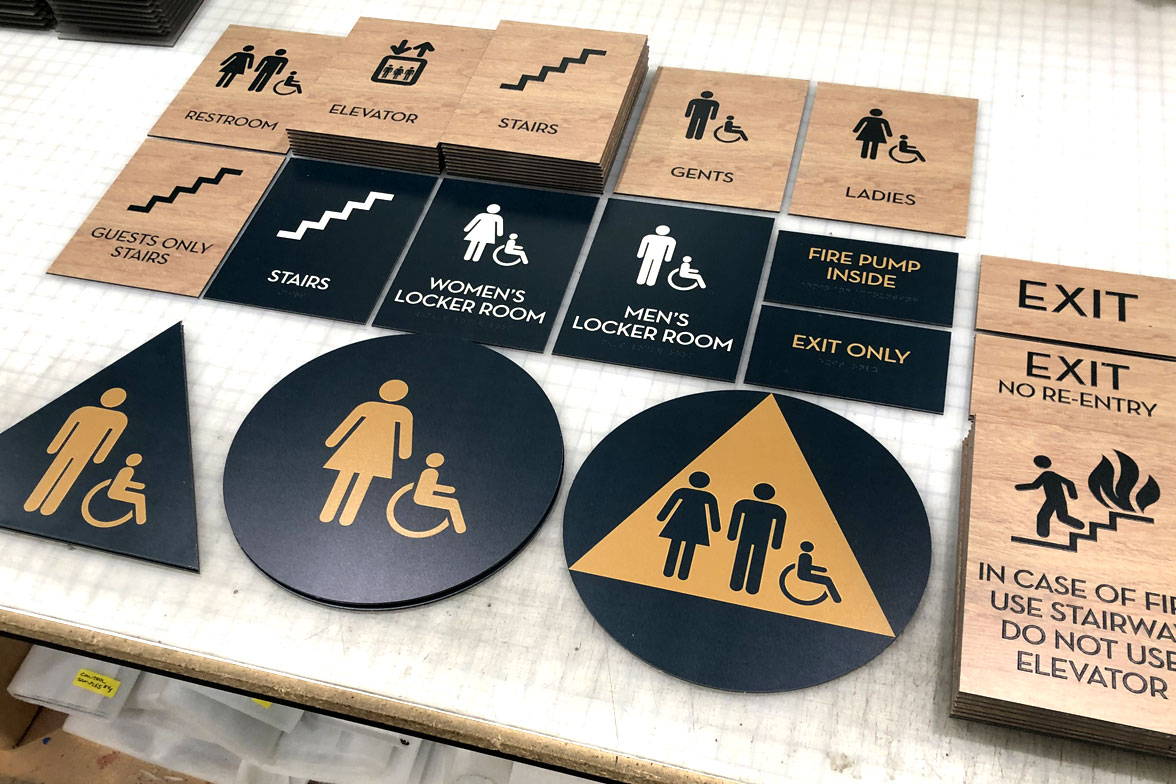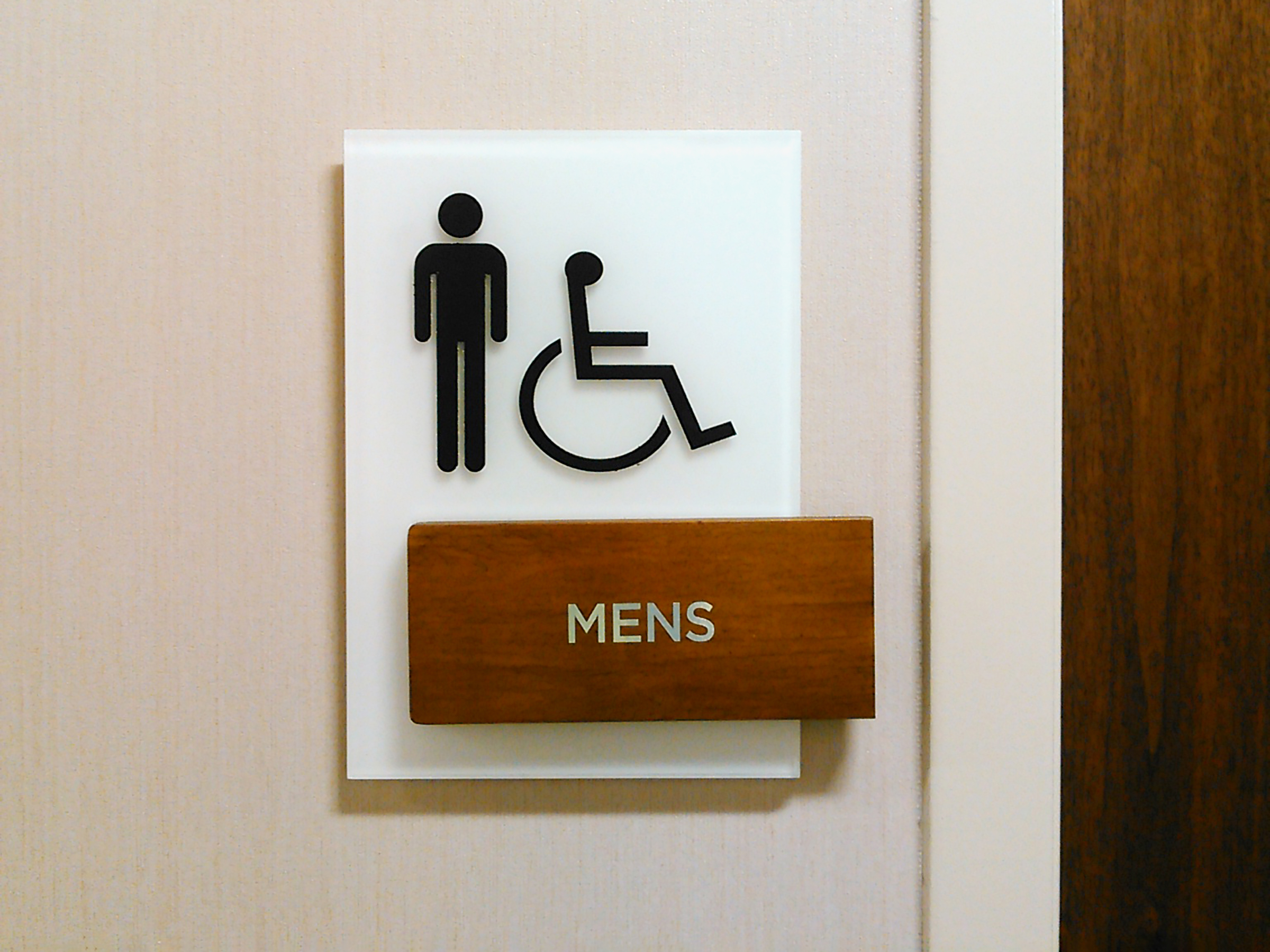The Duty of ADA Signs in Complying with Ease Of Access Criteria
The Duty of ADA Signs in Complying with Ease Of Access Criteria
Blog Article
Exploring the Key Functions of ADA Indications for Boosted Accessibility
In the world of availability, ADA indications offer as silent yet powerful allies, making sure that areas are comprehensive and accessible for people with impairments. By integrating Braille and responsive elements, these signs break obstacles for the aesthetically damaged, while high-contrast color pattern and clear font styles provide to diverse visual needs. Moreover, their tactical positioning is not approximate but rather a calculated effort to facilitate smooth navigating. Beyond these attributes exists a deeper narrative regarding the advancement of inclusivity and the continuous dedication to creating fair spaces. What much more could these indicators represent in our search of universal ease of access?
Significance of ADA Conformity
Guaranteeing compliance with the Americans with Disabilities Act (ADA) is crucial for promoting inclusivity and equal gain access to in public rooms and work environments. The ADA, enacted in 1990, mandates that all public facilities, companies, and transportation solutions accommodate individuals with specials needs, ensuring they enjoy the same rights and possibilities as others. Compliance with ADA requirements not just meets lawful commitments however additionally boosts a company's reputation by demonstrating its commitment to diversity and inclusivity.
One of the crucial elements of ADA compliance is the application of available signage. ADA indications are made to guarantee that individuals with handicaps can conveniently browse through areas and buildings.
Additionally, sticking to ADA regulations can alleviate the risk of possible fines and lawful consequences. Organizations that fall short to abide by ADA guidelines might deal with claims or fines, which can be both destructive and financially challenging to their public image. Hence, ADA compliance is essential to promoting an equitable environment for everyone.
Braille and Tactile Elements
The incorporation of Braille and tactile components right into ADA signage symbolizes the principles of access and inclusivity. These features are vital for people that are aesthetically impaired or blind, allowing them to navigate public areas with higher independence and self-confidence. Braille, a responsive writing system, is important in offering written details in a style that can be quickly regarded through touch. It is normally put under the equivalent text on signage to make sure that people can access the info without visual aid.
Responsive elements prolong past Braille and consist of raised characters and symbols. These parts are developed to be noticeable by touch, allowing individuals to determine space numbers, bathrooms, leaves, and various other vital areas. The ADA sets particular standards concerning the size, spacing, and positioning of these responsive aspects to optimize readability and guarantee consistency throughout different environments.

High-Contrast Color Pattern
High-contrast color pattern play a pivotal duty in enhancing the visibility and readability of ADA signs for individuals with visual impairments. These schemes are essential as they optimize the distinction in light reflectance between text and history, making certain that signs are easily noticeable, even from a distance. The Americans with Disabilities Act (ADA) mandates the usage of particular shade contrasts to fit those with minimal vision, making it a vital aspect of conformity.
The efficacy of high-contrast colors depends on their capability to stand apart in various lights conditions, including poorly lit atmospheres and locations with glow. Usually, dark text on a light background or light message on a dark background is employed to attain optimum contrast. Black text on a white or yellow history offers a stark visual distinction that aids in fast recognition and understanding.

Legible Fonts and Text Size
When thinking about the design of ADA signage, the choice of clear Find Out More typefaces and proper text size can not be overstated. The Americans with Disabilities Act (ADA) mandates that fonts have to be not italic and sans-serif, oblique, manuscript, extremely attractive, or of unusual form.
The size of the message also plays a pivotal role in access. According to ADA guidelines, the minimal message height ought to be 5/8 inch, and it must enhance proportionally with checking out distance. This is particularly crucial in public spaces where signage needs to be checked out promptly and precisely. Consistency in text size adds to a cohesive visual experience, aiding individuals in browsing settings successfully.
Furthermore, spacing between letters and lines is integral to readability. Ample spacing protects against characters from appearing crowded, enhancing readability. By adhering to these requirements, developers can dramatically boost ease of access, making sure that signs offers its intended objective for all people, regardless of their aesthetic capacities.
Efficient Positioning Methods
Strategic placement of ADA signage is crucial for making the most of access and making certain compliance with legal standards. Correctly positioned signs direct individuals with disabilities efficiently, assisting in navigating in public rooms. Key factors to consider include elevation, presence, and closeness. ADA guidelines stipulate that indications must be placed at an elevation in between 48 to 60 inches from the ground to guarantee they are within the line of view for both standing and seated people. This conventional height array is crucial for inclusivity, allowing mobility device customers and people of differing elevations to gain access to info easily.
Furthermore, indications should be put adjacent to the lock side of doors to permit very easy identification prior to entrance. Consistency in indication positioning throughout a center improves predictability, reducing confusion and boosting general customer experience.

Final Thought
ADA indicators play an important role in advertising accessibility by incorporating functions that address the demands of people with specials needs. These aspects collectively promote a comprehensive setting, highlighting the importance of ADA compliance in guaranteeing equivalent gain access to for all.
In the realm of ease of access, ADA indications offer as quiet yet powerful allies, ensuring that spaces are comprehensive and navigable for individuals with disabilities. The ADA, passed in 1990, mandates that all public centers, companies, and transportation services accommodate people with disabilities, guaranteeing they delight in the same rights and chances as others. ADA Signs. ADA signs are developed to ensure that individuals with disabilities can quickly browse through spaces and structures. ADA guidelines state that indications should be mounted at an elevation between 48 to 60 inches from the ground to ensure they are within the line of sight for both standing and seated people.ADA signs play a vital role in promoting ease of access by incorporating attributes that attend to the needs of individuals with specials needs
Report this page